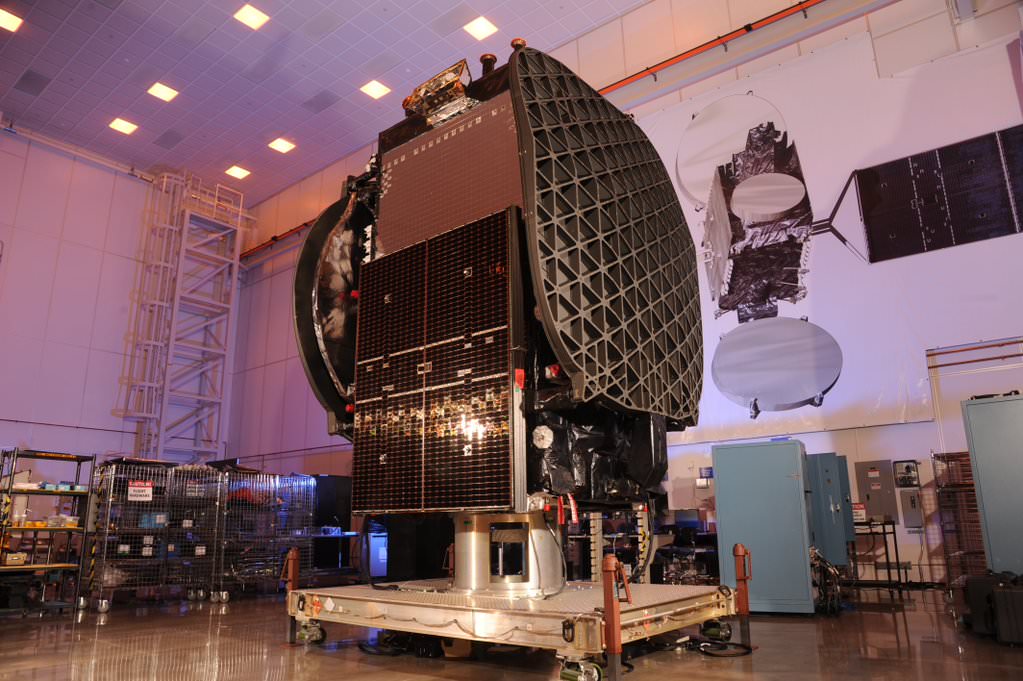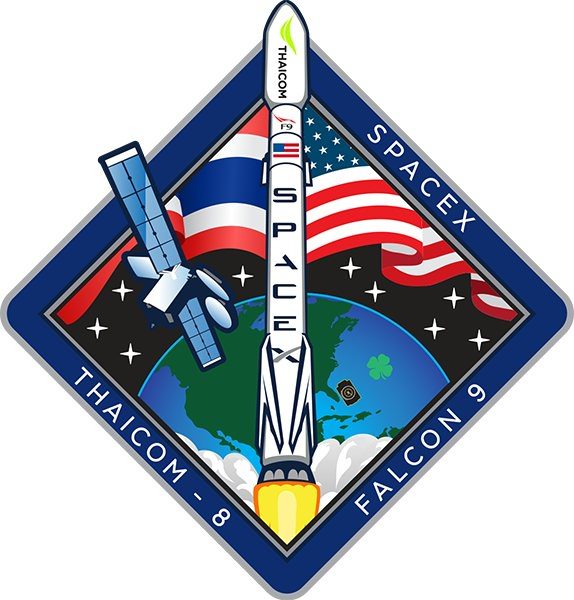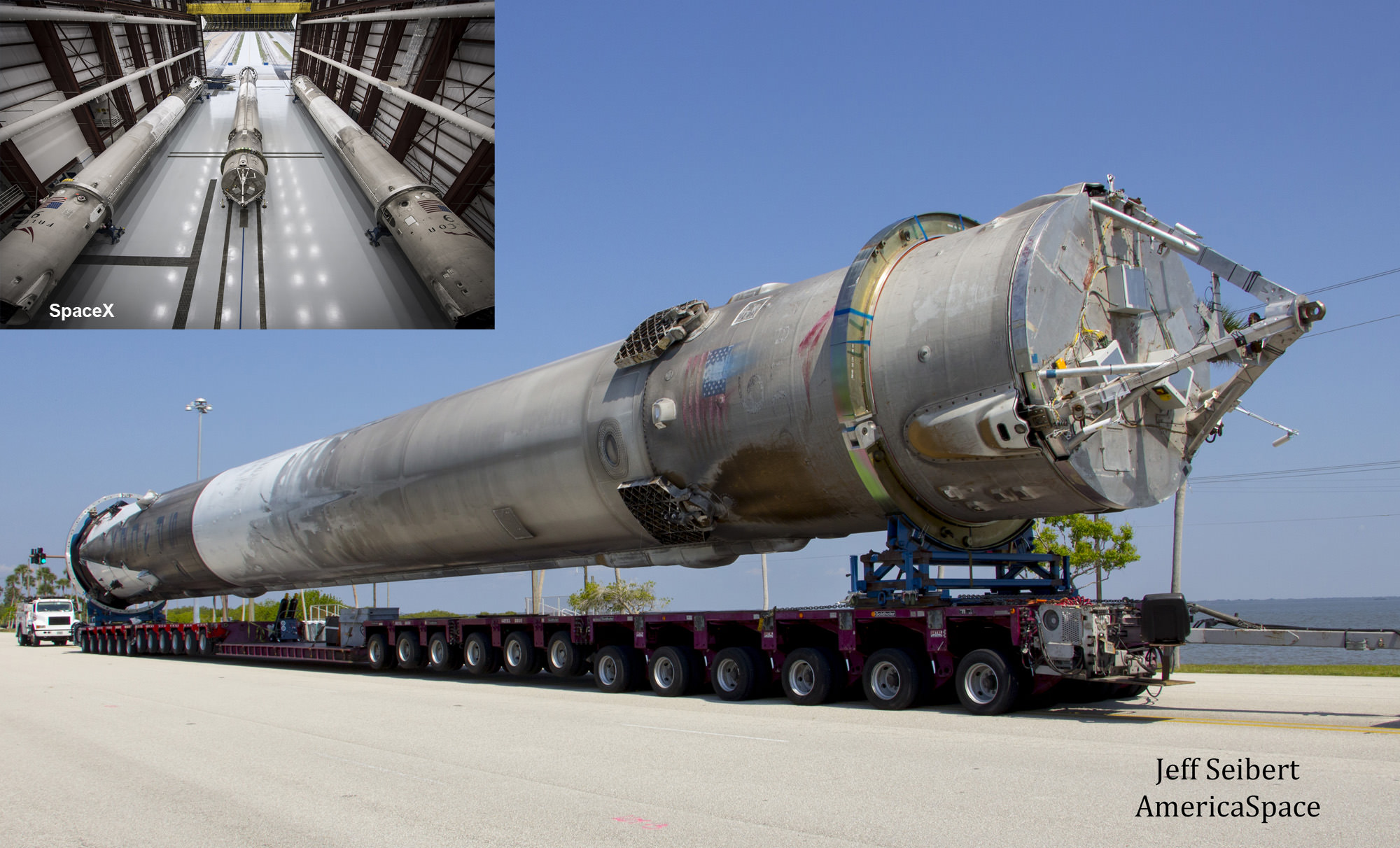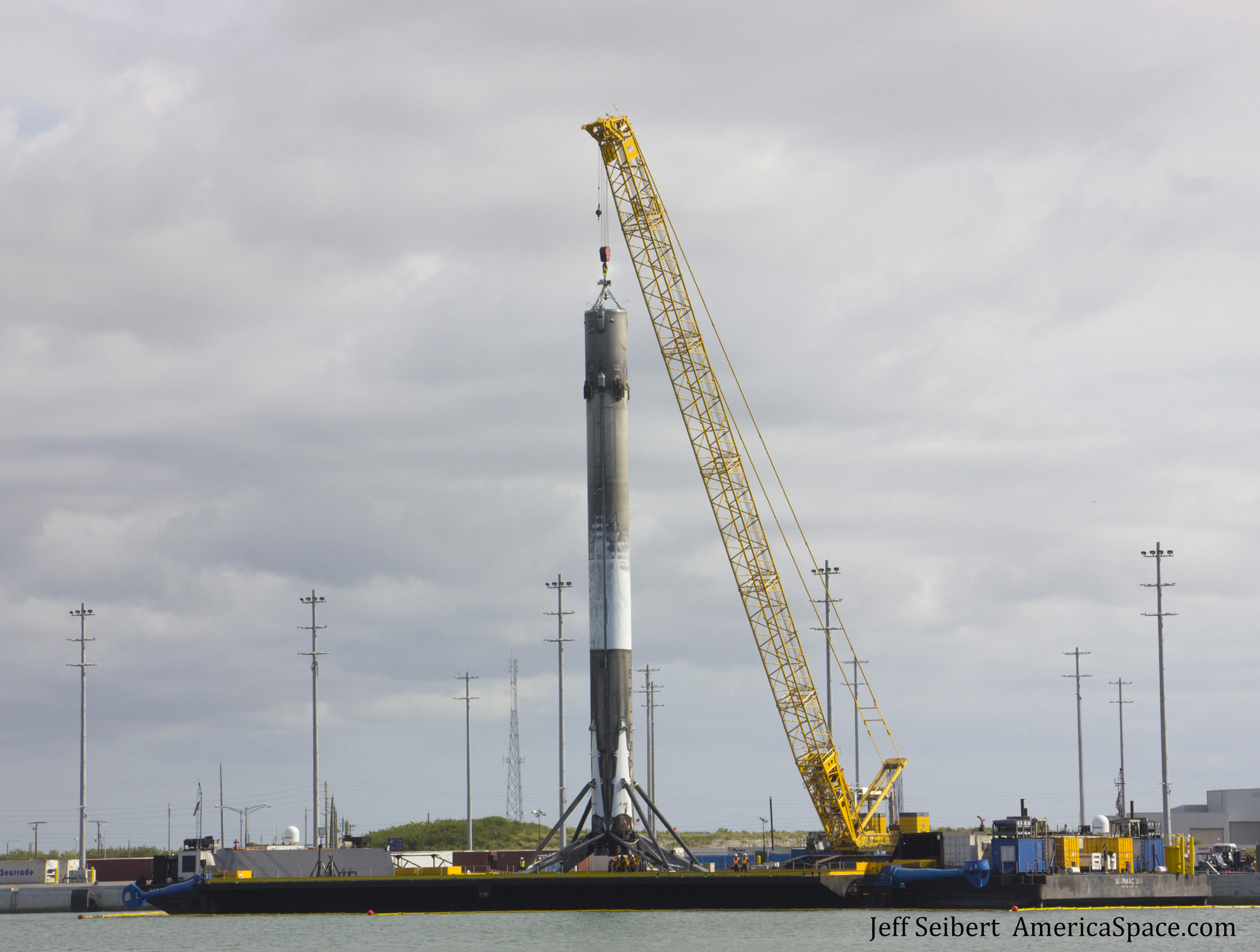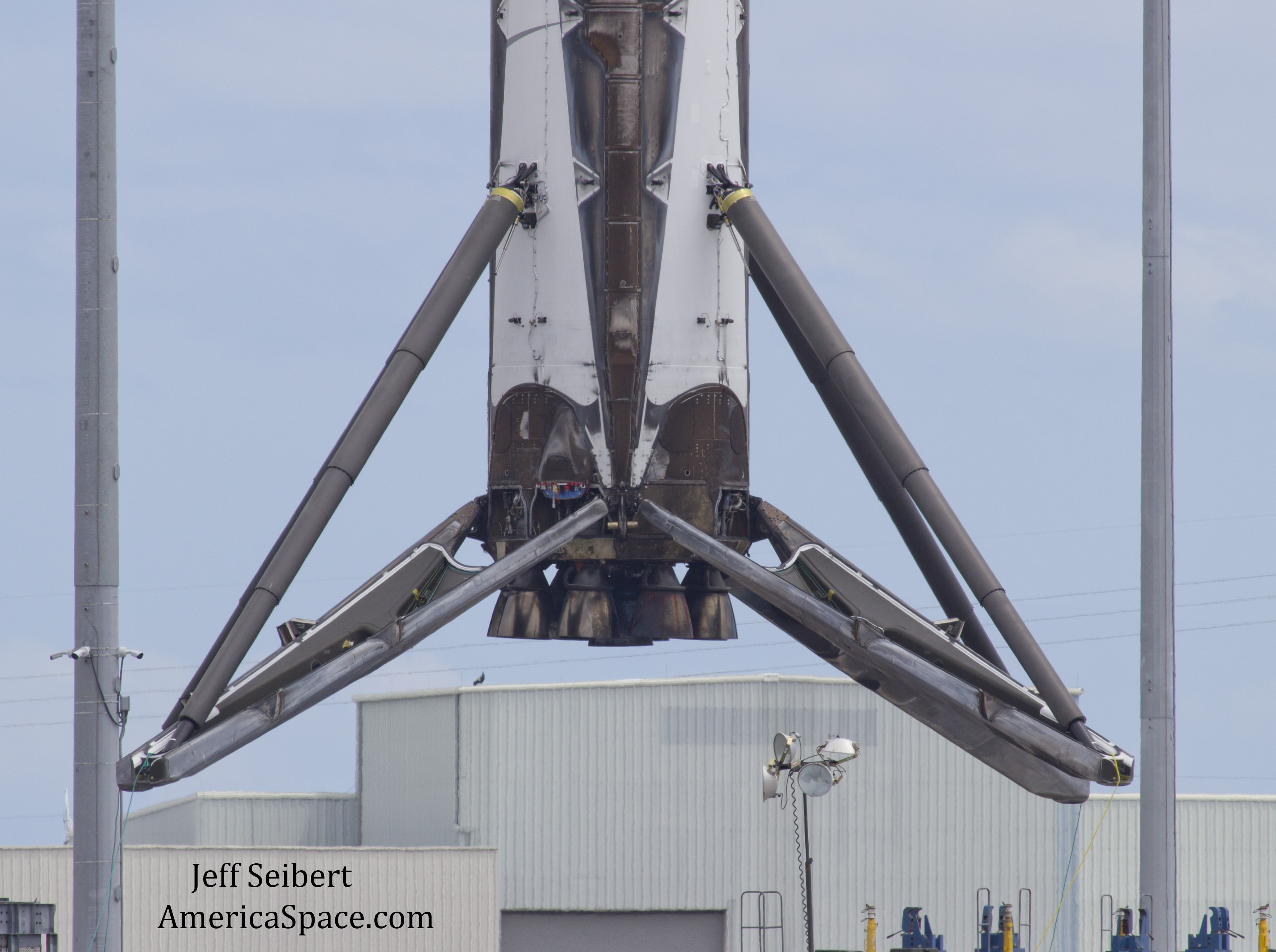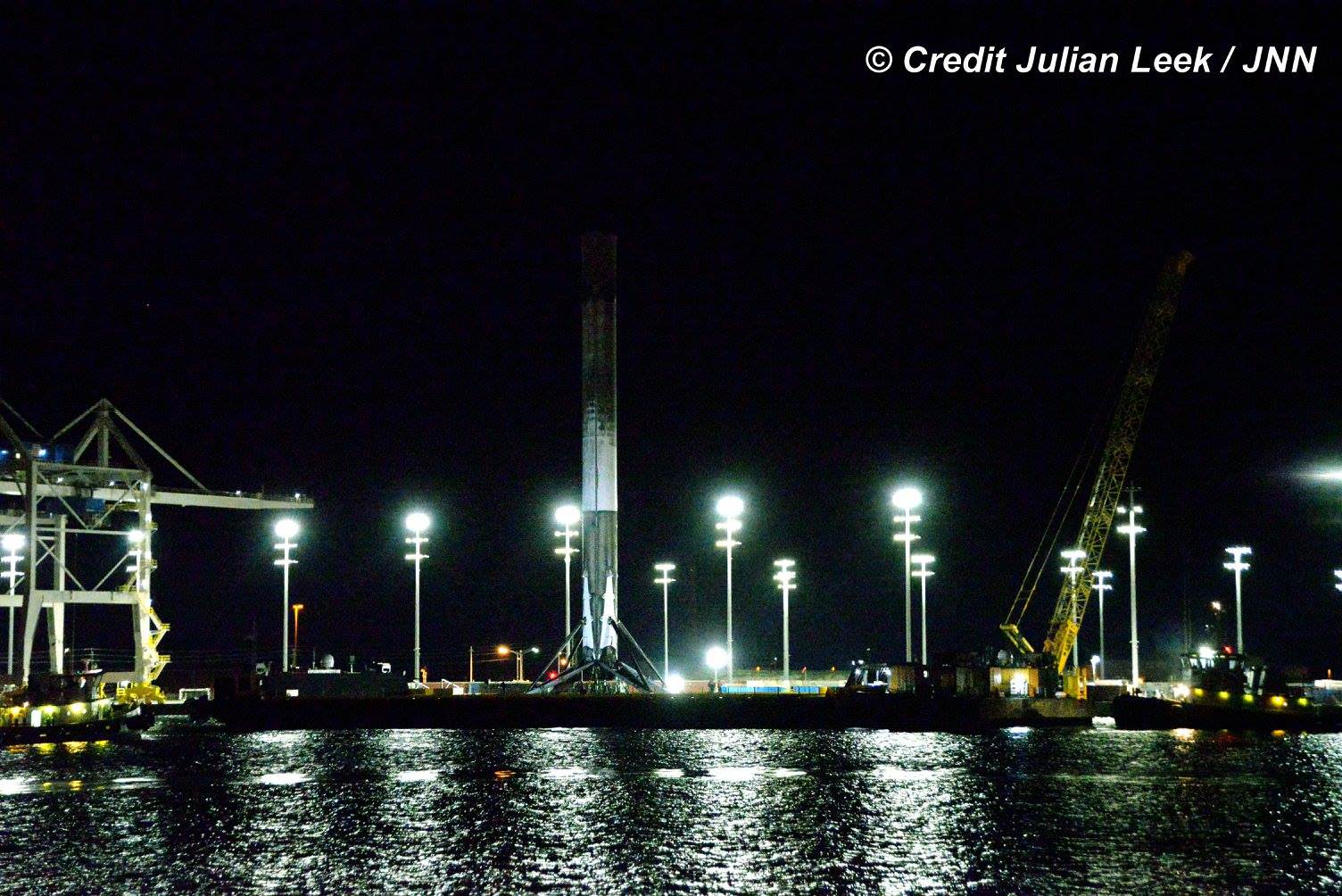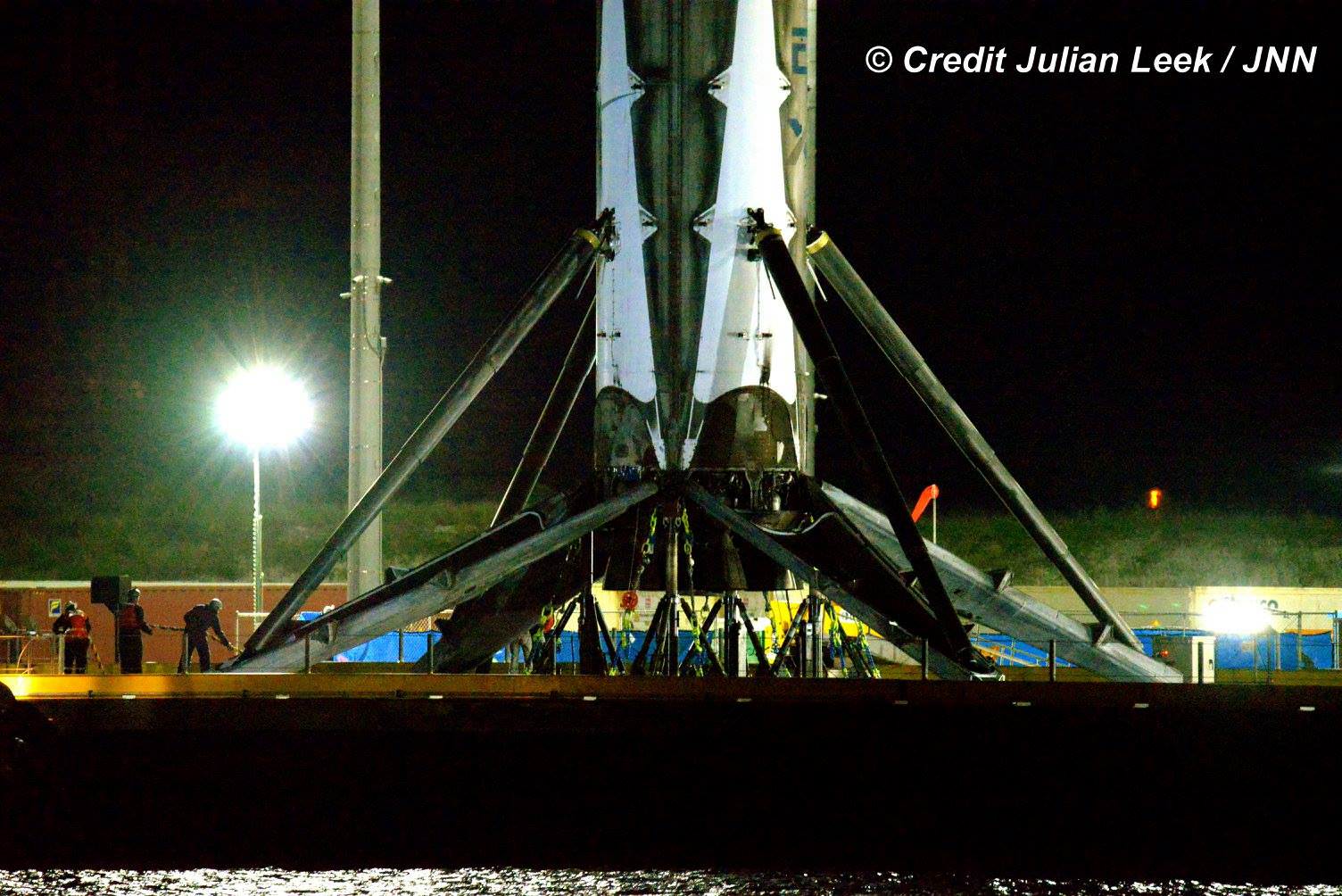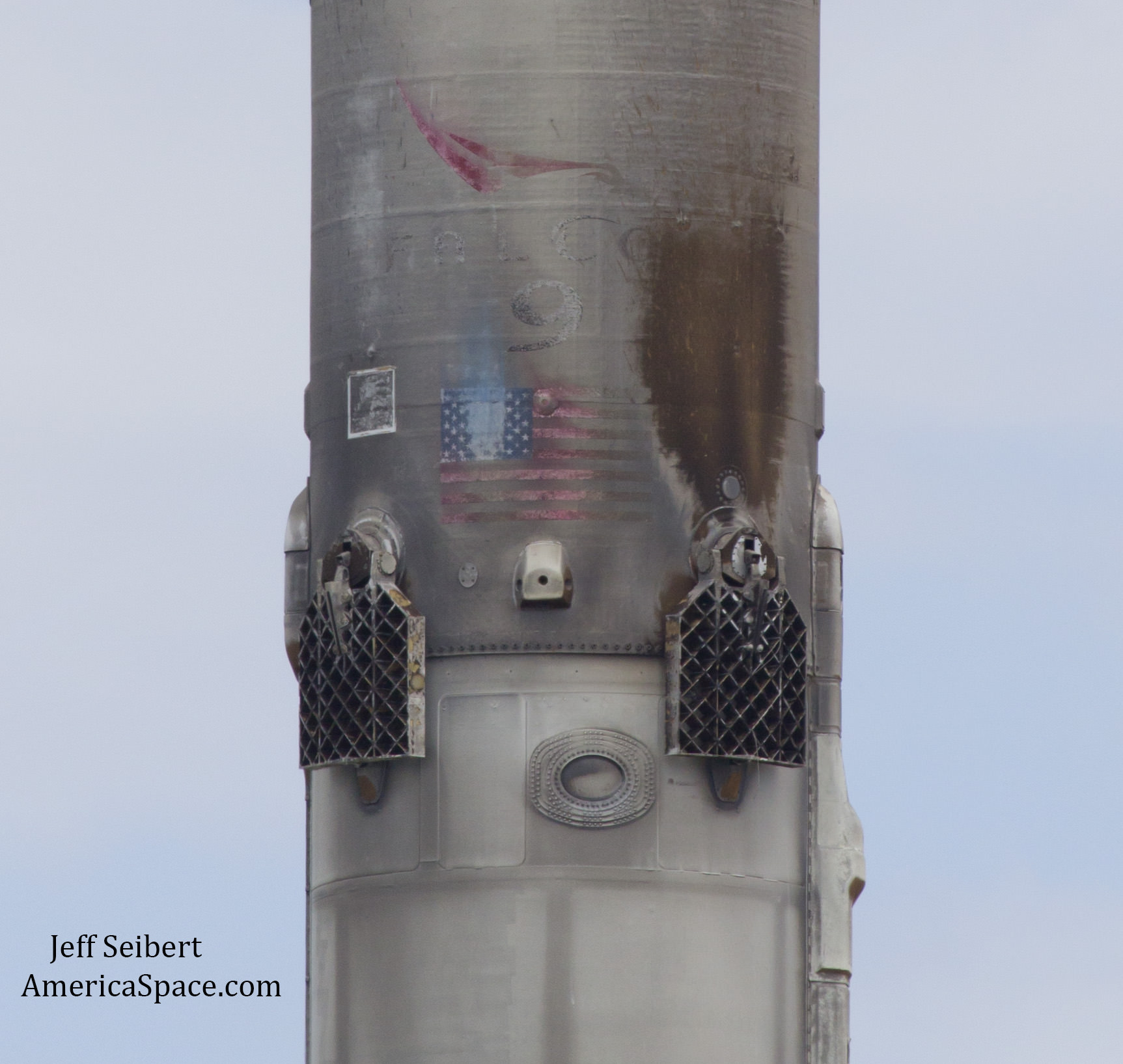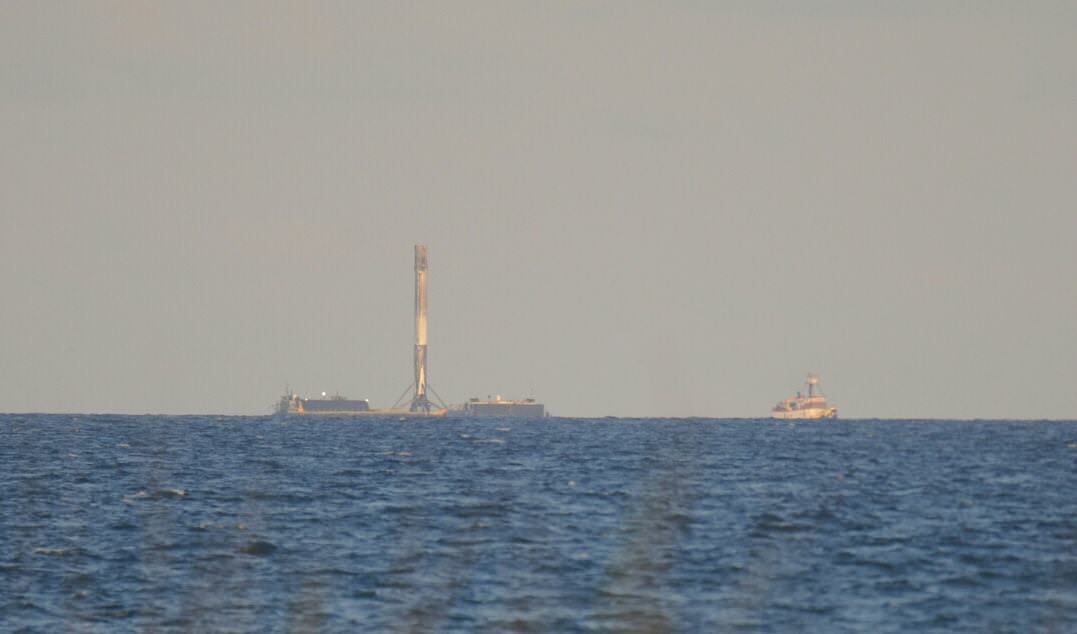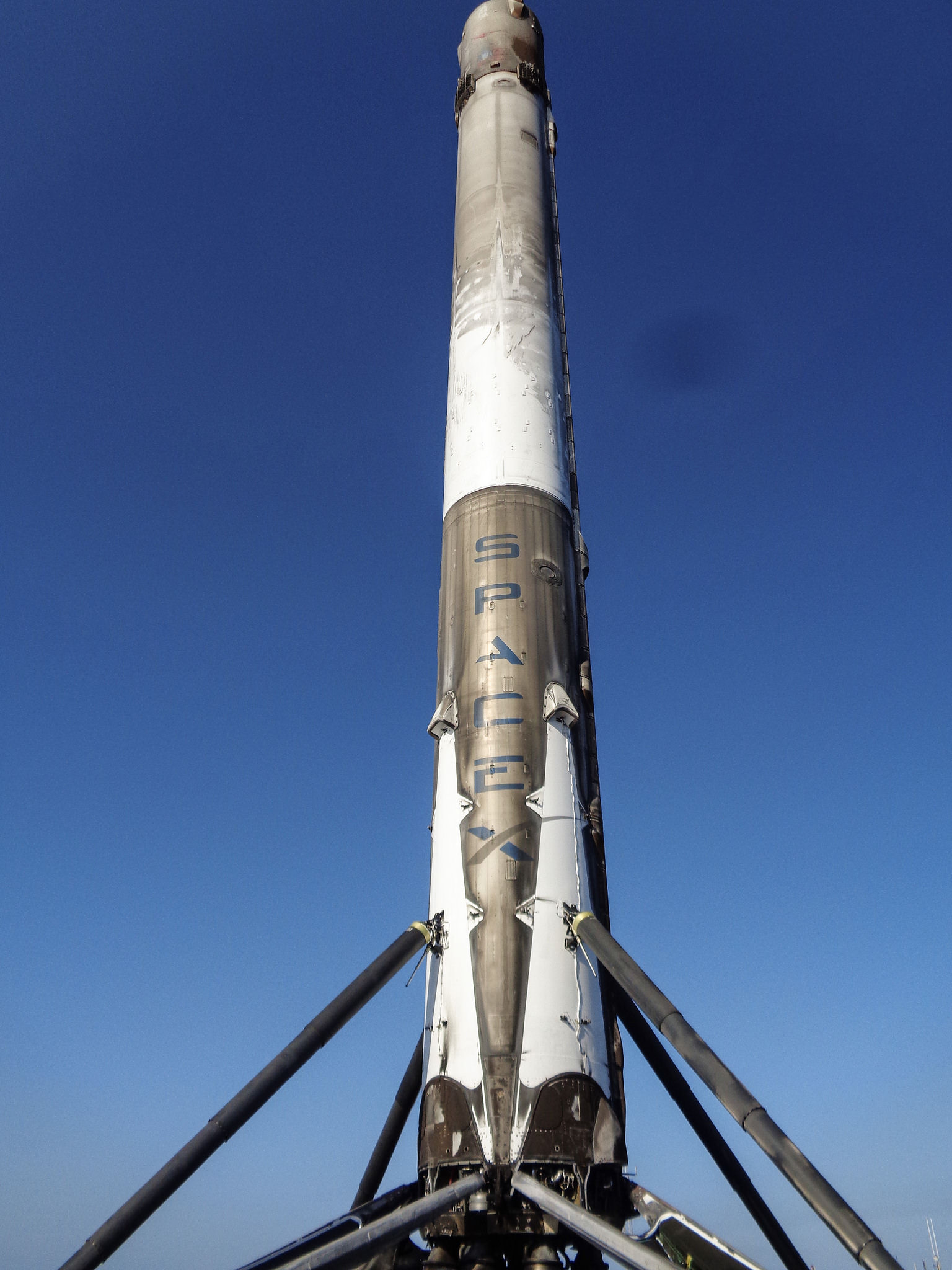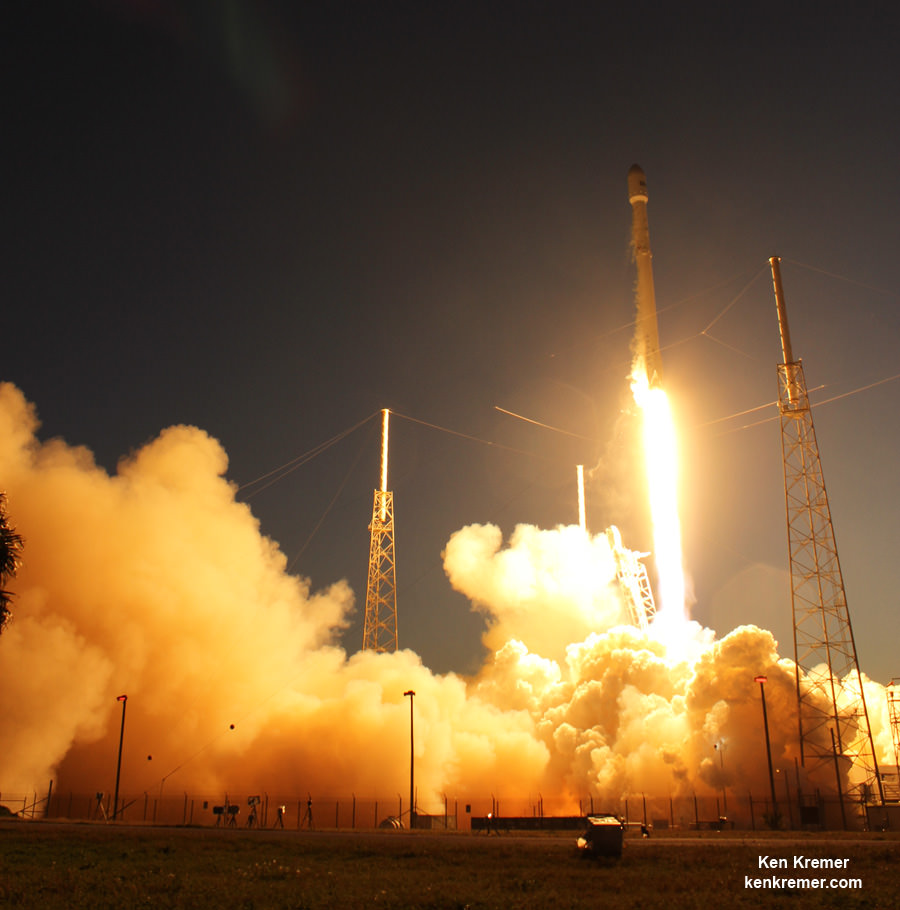
KENNEDY SPACE CENTER, FL – Under stellar moonlit Florida skies, a private SpaceX Falcon 9 took flight overnight and flawlessly delivered the commercial EchoStar 23 television satellite to geosynchronous orbit after high winds delayed the rockets roar to orbit by two days from Tuesday. Breaking News: Check back for updates
The post midnight spectacle thrilled spectators who braved the wee hours this morning and were richly rewarded with a rousing rush as the 229 foot tall Falcon 9 rocket thundered to life at 2:00 a.m. EDT Thursday, March 16 from historic Launch Complex 39A on NASA’s Kennedy Space Center and sped to orbit.
Rising on the power of 1.7 million pounds of liftoff thrust generated by nine Marlin 1D first stage engines, the two stage Falcon 9 rocket successfully delivered the commercial EchoStar 23 telecommunications satellite to a Geostationary Transfer Orbit (GTO) for EchoStar Corporation.
The satellite was deployed approximately 34 minutes after launch.
Thus began March Launch Madness !!
If all goes well, March features a triple header of launches with launch competitor and arch rival United Launch Alliance (ULA) planning a duo of nighttime blastoffs from their Delta and Atlas rocket families. The exact dates are in flux due to the earlier postponement of the SpaceX Falcon 9. They have been rescheduled for March 18 and 24 respectively.
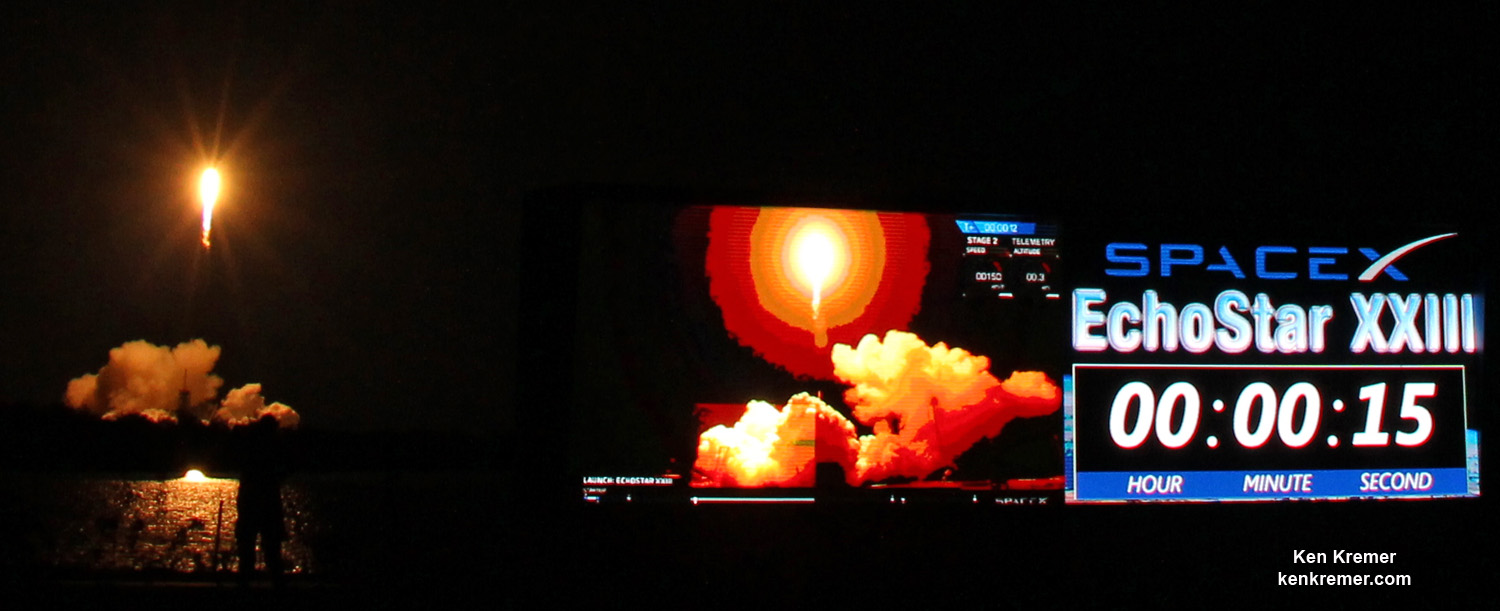
EchoStar 23 will be stationed over Brazil for direct to home television broadcasts and high speed voice, video and data communications to millions of customers for EchoStar.
It was designed and built by Space Systems Loral (SSL).
“EchoStar XXIII is a highly flexible, Ku-band broadcast satellite services (BSS) satellite with four main reflectors and multiple sub-reflectors supporting multiple mission profiles,” according to a description from EchoStar Corporation.
EchoStar XXIII will initially be deployed in geosynchronous orbit at 45° West. The Satellite End of Life (EOL) Power is 20 kilowatts (kW).
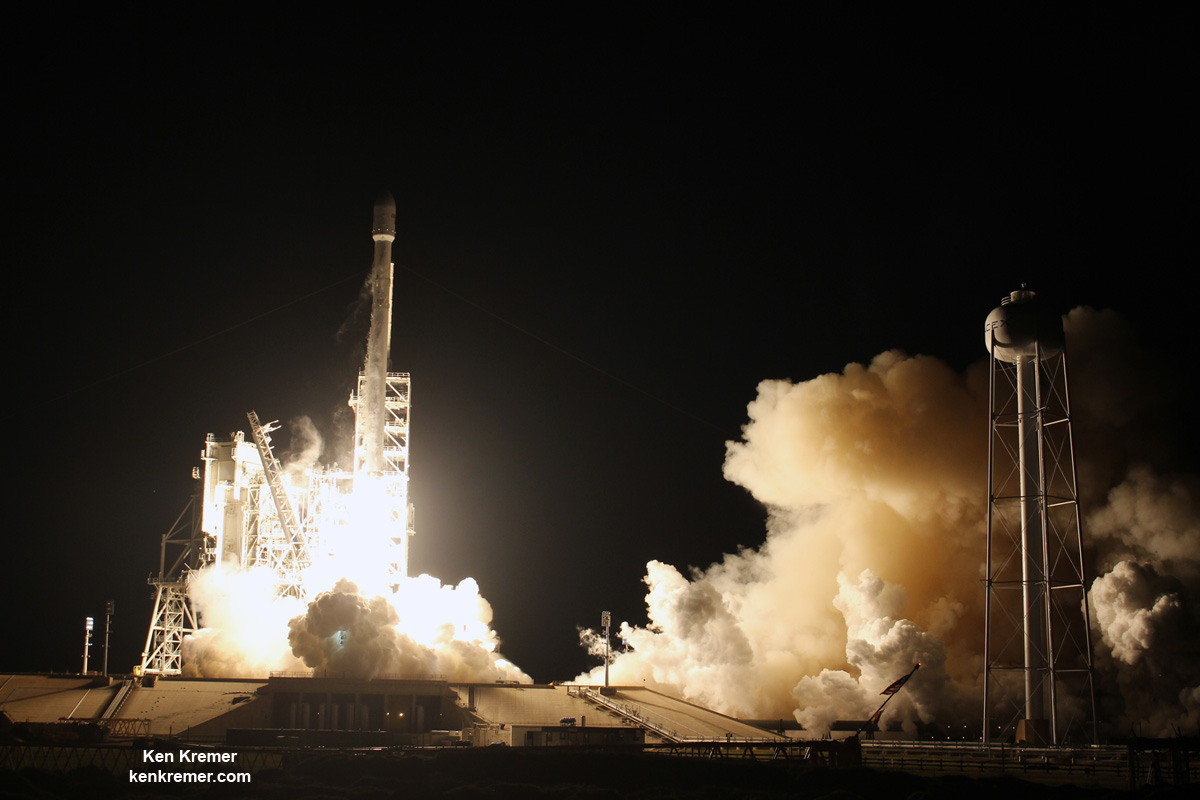
The entire launch sequence was broadcast live on a SpaceX hosted webcast that began about 20 minutes before the revised liftoff time of 2:00 a.m. from the prelaunch countdown, blastoff and continued through the dramatic separation of the EchoStar 23 private payload from the second stage.
The EchoStar 23 launch counts as only the second Falcon 9 ever to blast off from pad 39A.
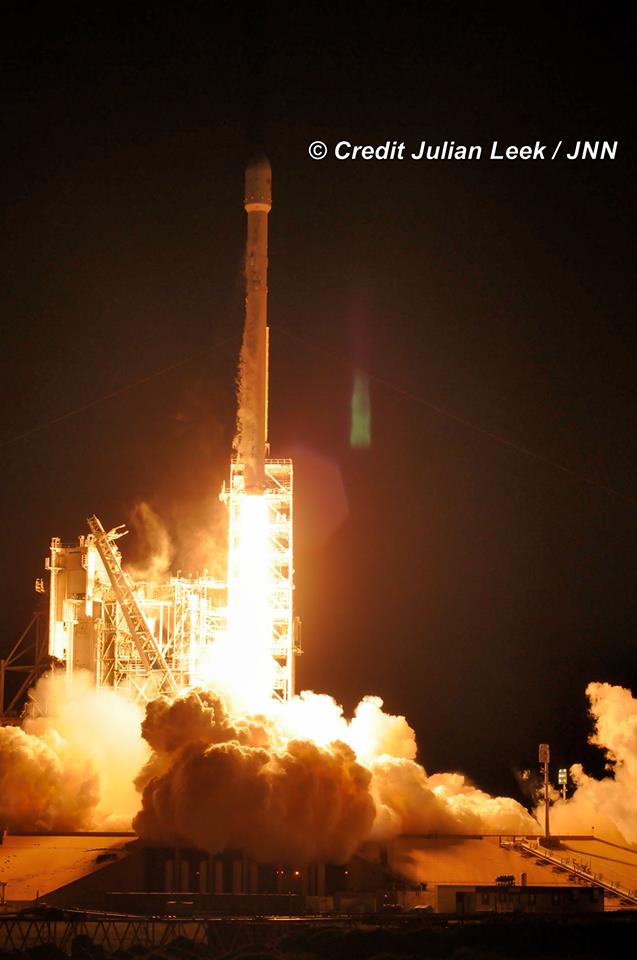
SpaceX’s billionaire CEO Elon Musk leased historic pad 39A from NASA back in April 2014 for launches of the firms Falcon 9 and Falcon Heavy carrying both robotic vehicles as well as humans on missions to low Earth orbit, the Moon and ultimately the Red Planet.

The inaugural Falcon 9 blastoff successfully took place last month on Feb. 19, as I reported here.
However unlike most recent SpaceX missions, the legless Falcon 9 first stage will not be recovered via a pinpoint propulsive landing either on land or on a barge at sea.
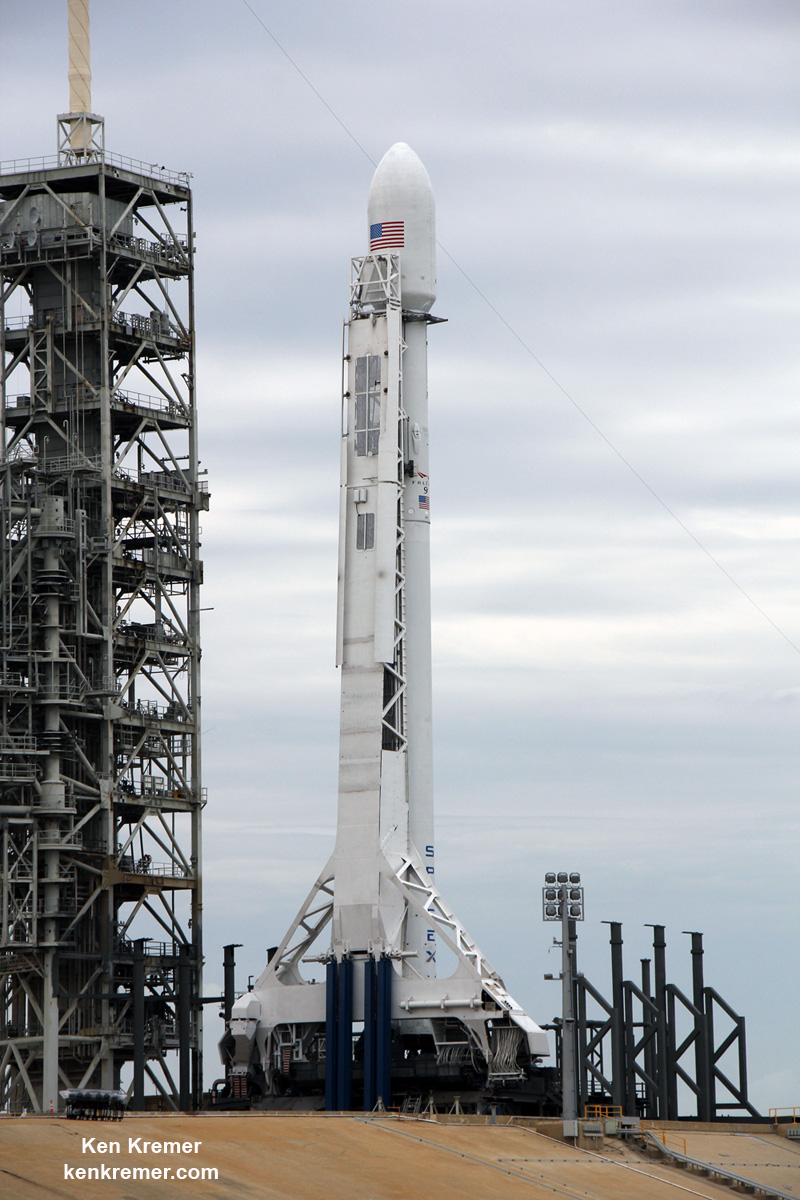
Because of the satellite delivery to GTO, there are insufficient fuel reserves to carry out the booster landing.
“SpaceX will not attempt to land Falcon 9’s first stage after launch due to mission requirements,” officials said.
Therefore the first stage is not outfitted with either landing legs or grid fins to maneuver it back to a touchdown.
SpaceX announced that this was the last launch of an expendable Falcon 9.
Stay tuned here for Ken’s continuing Earth and Planetary science and human spaceflight news.


